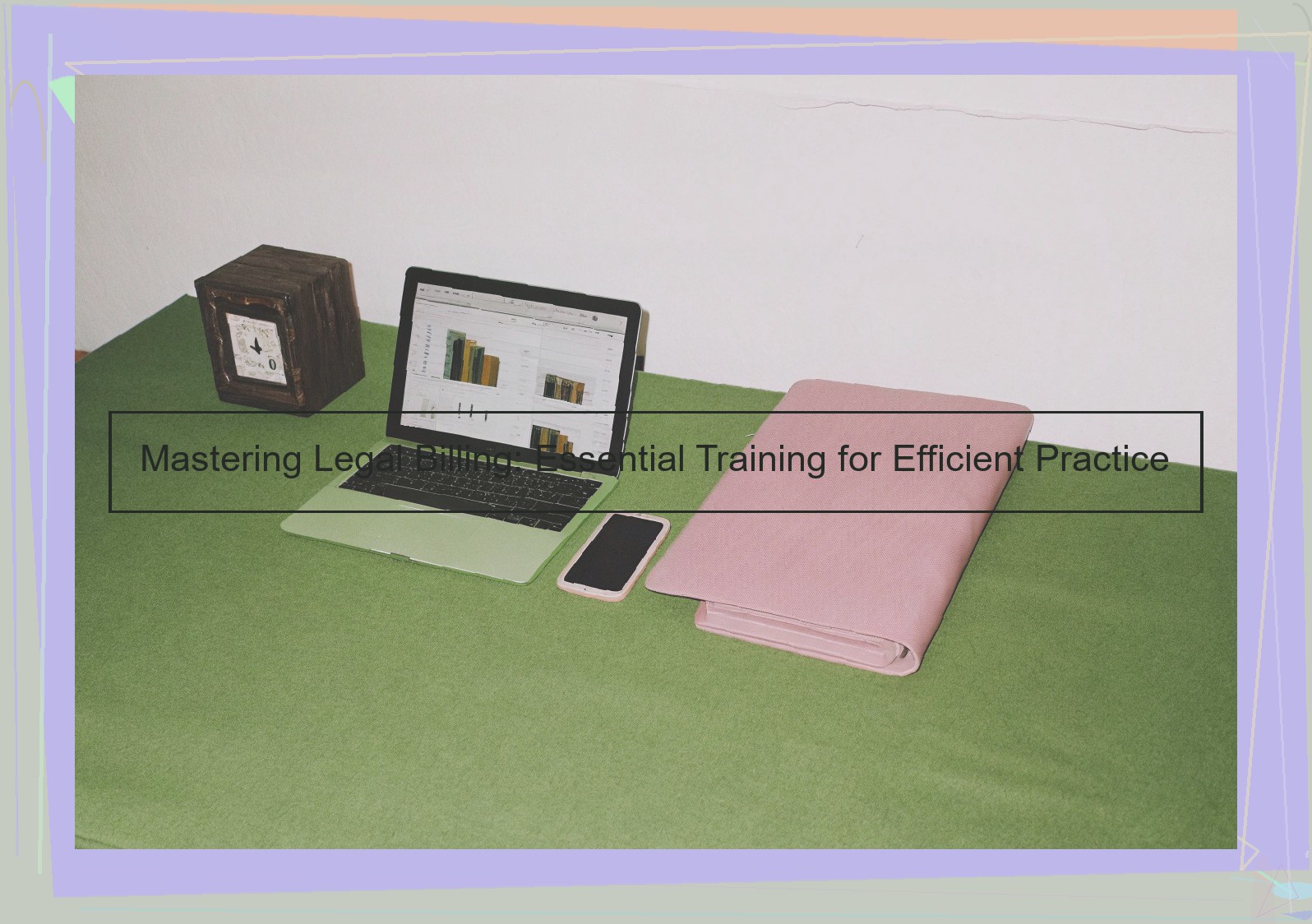An Introduction to Legal Billing
Legal billing is among the most important tasks that take place in a law firm. A solid knowledge of the legal billing process and the ability to leverage legal billing software can have a significant impact on a law firm’s bottom line. But many legal professionals who are tasked with generating bills do not have a comprehensive understanding of the legal billing process. There are numerous complexities that have to be taken into consideration when preparing legal bills so that law firms can get paid for the services they have provided to their clients. Legal billing is the process of preparing a legal bill for a client using the information that is maintained in various case management tools. Case management programs help law firms track expenses, document activities and demand payments. Legal bills can be created based on these changes over a specific billing cycle. Certain elements of the legal billing process are standard in most cases, including the client’s name , the legal matter that needs to be billed and the activity that describes the charge. When an attorney has worked on a particular case, it is important to include all of the related activity and expenses in the client bill. Having an organized account of activities shows a firm’s professionalism and can lead to faster payment because there is no ambiguity about what activities have taken place and what they have cost. Maintaining top of the line technology, like accounting software, can make the legal billing process easier. By eliminating the need to track bills on paper, having electronic software allows users to track invoices with ease and produces reports that can provide firms with their performance metrics. It also allows firms to analyze time periods to increase profitability by charging appropriately for expenses and activities. Legal billing is one of the most important components of operating a profitable law firm, so it’s imperative that management understand the process and their role in it.

Key Components of Effective Legal Billing
At its core, legal practice management software includes three components of a successful legal billing system: time tracking, invoicing, and communication.
Time Tracking: In order to bill accurately, accurately capturing the time you’re spending on a matter is essential. In order to get paid for all the work you’re doing, not miss the billable time you forgot to record, or misrecord at a lower rate, you need your time tracking system to be as efficient as possible. The longer it takes to record your time, the more likely you are to forget to bill for certain phone calls and emails. Practicing law means fielding interruptions during the day that distract you from continuously documenting your time. Incorporating notifications on emails or text messages into your practice management software gives you the ability to stay on top of your time tracking even when you’re away from your computer. Automating time tracking will help you get paid for more of the time you spend practicing law.
Invoicing: Invoicing is the next component of a successful legal billing system. Once your time is tracked and expenses logged, an invoice can be drafted quickly and sent to the client. But not all clients are set up to receive an electronic invoice. Having the ability to print out an invoice, add a handwritten note, and send it via traditional mail should be a simple and quick process, and it should all be done through your case management software. Not all practice management systems have strong legal billing capabilities. If yours does not, you aren’t getting the full value for your investment.
Communication: The final component of legal billing is communications. Are your clients receiving regular emails alerting them to the fact that you’ve performed work on their case and sending them a copy of their current invoice? Do they feel kept in the loop about the progress of their case? Are your emails to clients sent with an email template that has been built into your legal billing software, which makes each email automatically have a professional look and feel? Are you "touching" your clients regularly to let them know you haven’t forgotten about them and are working to move their case forward? By letting your clients know you’re still working on their case, you increase the chances that they’ll continue to pay their invoices in full; you also reduce the number of times your client reaches out to you looking for information by letting them know that they’ll be contacted as soon as there’s something new to report.
Legal Billing Software: Choosing the Right Tool
When it comes to legal billing, there is no shortage of software options available for lawyers. Here is a universe of choices ranging from the free to the expensive to the really expensive. The software, in its simplest form, is designed to help you keep track of your time and expenses on a matter and to produce an invoice that can be sent to the client.
At the low end of the scale are the time and billing programs offered with most of the legal practices management systems. Leaps in other areas of technology have not caused much shift in these programs. Their price point (often zero) and limited features make them attractive options for smaller firms or solo practitioners.
A more sophisticated software package, such as Clio, uses the "SaaS" model. SaaS (Software as a Service) is available for a monthly fee and can be accessed from any Internet-connected device. It usually costs between $50-$65 per month per user. These programs can do a lot more than the traditional programs, such as allow you to easily enter and edit time, print out reports of your activities, and ideally, access the invoices before they are sent to the client by e-mail or regular mail. It is important to remember that all the data you input into a SaaS system is located at a remote site and not on your desktop.
At the high-end are programs such as Timeslips, ProLaw, Amicus Attorney or PCLaw. All of these are installed on your firm’s network and usually cost $600-$1,000 a year for updates. Available only for Windows, they have been around since the early 90s and have lots of features, including customizable reports. They have their deficiencies, too. Because these programs are created for a Windows environment, the user experience may not always be optimal on Mac computers. Converting data from one program to another can also be a challenge that many firms face and are not always successful in performing. It is essential to understand how difficult, or how expensive, it would be to convert your data from one system to another when selecting a program.
Some additional factors to consider include:
Each firm has to determine what is best for them. For some, free is a terrific price. Others will pay, a lot, because they want everything the program has to offer.
Compliance and Ethics Considerations
As billing for services becomes more and more vital to the sustainability of solo and small firm practices, attorneys must take notice of the importance of compliance with state bar rules and requirements when preparing bills. The American Bar Association’s Rules of Professional Conduct rule 1.5, addressing contractual and statutory fees, also sets forth that a lawyer’s fees shall not be unreasonable. While this rule does not require accurate billing, issuing a bill that is unreasonable in its entire context may violate the ABA rules. Relevant factors to consider include the time and labor required, the difficulty of the matter, the skill required, and whether the client consented to the scope of work. So while a client may consent to the scope of work, if the scope of work is unreasonable the overall bill will be unreasonable regardless of the amount of time billed by an attorney.
Most state bar associations require attorneys to ensure compliance with the applicable state bar rules. For example, California Rule of Professional Conduct 4-200 requires compliance with the ABA’s 1993 language that represented "a significant effort" on the part of the ABA to narrow the scope of conflicting case law. In Oklahoma, Rule 5.4 of the Oklahoma Rules of Professional Conduct requires compliance with the ABA 1983 Rule 2-106: "A lawyer shall not make an agreement for, charge, or collect an illegal or unreasonable fee or a contingent fee unless the agreement is in writing signed by the client…" Oklahoma has also gone further in developing a comprehensive set of rules under Rule 1.5 regarding fees, explaining that "all representations of clients are for a reasonable fee unless otherwise specified" and that "the lawyer’s fee shall be set forth in a written agreement if the client requests it…"
The bar rules in each state are slightly different, but all illustrate an overarching strategy to protect the client. One example relates to overhead; a rule may state that fixed overhead is not a factor in determining a reasonable rate of compensation, barring any expectations from the client that the attorney’s hourly rate will decrease if overhead costs decrease. Each state bar provides its own guidelines for determining the enforceability of fixed or contingent fees. Typically, contingent fees are not permitted in criminal cases as well as in most domestic relations matters. In many states there are also caps on contingent fees in medical malpractice and contingent liability cases. Many states do also require clients to specifically waive a particular conflict of interest when considering contingent fees, another potential compliance requirement that may be overlooked.
Best Practices for Effective Timekeeping
No matter what kind of practice you have, or what types of matters you take on, keeping good time records is essential for efficient business operations and profitability. Some firms have been unable to keep billing practice from eating up more than 10% of their time. That translates into effective fees being cut for all the time spent doing invoices. To make sure time-keeping is as efficient as possible, be sure to tag all time records accurately and follow the same process consistently. If an attorney has to re-learn how to enter time every month, it will take them longer, and they are more likely to make mistakes. When your software system has a user-friendly process for handling time records, you will save time for both you and your billing professionals. You should also determine who will be entering time and when it will be entered. If you don’t have a professional available to enter time after every phone call and meeting, then make sure it is clear that whoever is responsible for entering the time must do so at the end of every day. One of the biggest reasons for missing time entries is simply forgetting – there is always a lot going on every day, and once a day passes, you are less likely to remember those small details about your work . Your staff must be disciplined about entering time daily, or immediately after a call, meeting, or significant email text entry. If you have clients who do not want to receive weekly or monthly invoices, or will only accept them quarterly, you won’t be able to enter your time when the work occurs. In that case, you need to come up with a different solution, or encourage the client to agree to monthly invoicing. Perhaps you can start to work with people with whom billing at the time of the project is a requirement. Feedback from staff regarding your time-keeping process should always be welcomed. Sometimes people will have a better, faster way to process time-keeping that saves your firm time and money. Make sure you have regular check-in meetings with staff to help smooth out any issues and keep everyone on the same page. Accurate time-keeping helps ensure that you don’t lose money, and that you are able to produce invoices quickly and easily. With a well-planned process, your billing can be done faster and easier, with happier clients.
Training Your Staff in Legal Billing
Training is essential to ensure that both your legal professionals and your support staff are competent and comfortable using the system. While it is important to include any employees who will use the timekeeping/billing system, the need to train them properly is critical to the billing team members responsible for the actual generation of invoices.
An initial training session is obviously critical, but should be backed up with a more extended program of support for users of the system, especially those team members whose responsibilities include invoicing clients. Training in the specifics of your practice management or time and billing system can take the form of live or recorded online training sessions, personal "one-on-one" coaching, easy online how-to videos or online knowledge databases where specific steps to accomplish specific functions can be quickly accessed.
Your firm’s continuing education program should include both periodic refresher courses and ongoing training as new features and functions are added to your system. Providing thorough training will virtually eliminate the disruptions which can be caused by a failure to correctly apply the principles of proper billing. Clients expect their lawyers and their staff to understand how to apply the law to the specifics of their case. They should be able to expect that the lawyer and/or the staff will be competent in the use of the timekeeping and billing system, and provide their clients with accurate invoices.
Case Studies: Successful Legal Billing
Many law firms, as well as their attorneys, learn the hard way how crucial it is to have a grasp of the inner workings of legal billing and practice management. In addition, they discover how important it is to be able to know precisely when and how various methodologies work, rather than relying on guesswork.
A respected law firm in Orlando became more organized when it embarked on a training and consolidation process that combined its time-keeping and billing. Freshbooks serves both purposes and is often used by both businesses and law firms. Recent developments in online and cloud-based billing systems have made it easier for busy attorneys to stay focused while not worrying about backend work.
A Philadelphia lawyer also implemented Freshbooks and docuSign in order to streamline the workflow process and create a new invoicing system. Since all of their clients now agree to the new process , they are much happier and have fewer complaints. This has resulted in fewer late payments and improved cash flow.
An Austin lawyer and a billing company located near Houston also began using a new billing system. They began using a convenient and centralized way to track the billing time between the two with a system that provides specialized tracking features. This enables them to resolve billing disputes prior to invoices being sent out.


